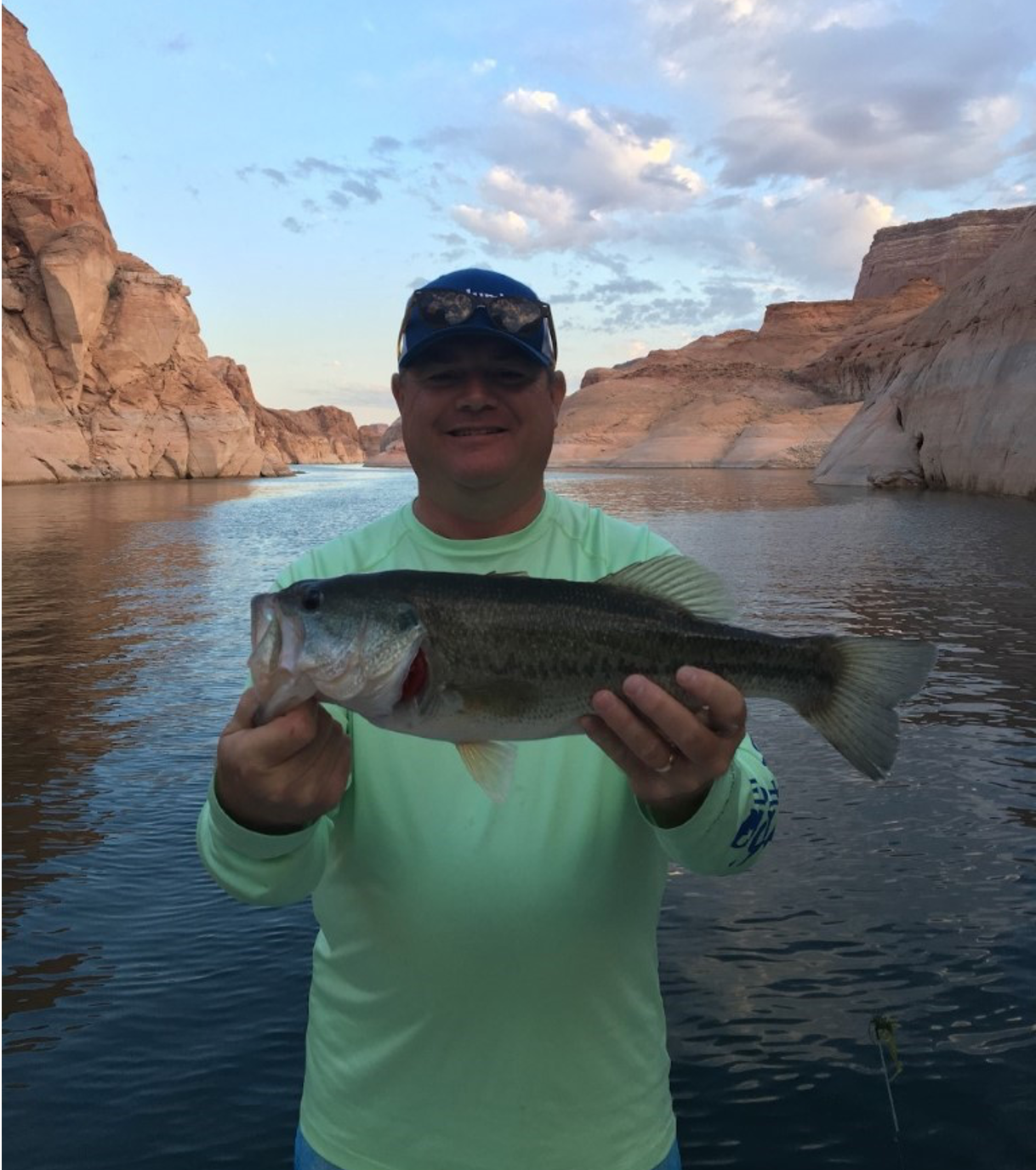Darren’s Story
Darren is the ultimate outdoorsman. He especially loves fishing and scuba-diving, but for many years, his back pain has prevented him from doing all he wants to. Like a lot of people with back pain, Darren’s problems began when he was very young.
At the age of 11, Darren had his first back injury. He left it alone for years, always tolerating the occasional soreness. But one day he was playing a pick-up basketball game, and another player collided with him. The impact exacerbated his injury, and the pain grew worse.
Darren was surprised by how much normal, daily activities were negatively impacted by his back problem. He couldn’t even wear a wallet in his back pocket, for example, without increasing the pain. At some point, he knew he needed to do something. He thought maybe a massage therapist could help him, so he started there. When that didn’t help, he went to a pain doctor, who began giving him regular injections.
“Dr. Edwards and Shea spent a lot of time with me. That was a big deal.”
“They worked pretty well at first, and then it just got to the point where they stopped being as effective as I wanted them to be,” Darren said. He knew that repeated injections would eventually have a negative long-term effect on his back. Darren was desperate to find a solution, but he had no idea what to do next.
Ironically, the answer came the next time his pain escalated.
One afternoon, he bent down to grab a package and immediately felt something give way in his back. Darren could hardly move. He called a neighbor to come to help him, and when the neighbor showed up, he told Darren to reach out to Shea Nielsen, a friend of his, and Nurse Practitioner at Summit Brain and Spine.
Darren had an MRI, and Dr. Edwards informed him that he had a ‘pars fracture,’, which is a fracture in the lower spine, usually caused by overuse. Pars fractures are quite common in active young people, and Darren probably had one early in his life, which would explain his pain from such a young age. After discussing the best options, Dr. Edwards advised him that surgery would probably be his best route to success.
Darren confessed he was a bit nervous. He knew a lot of people who had undergone back surgeries, and he was worried that it would cause him more harm than good. “The last thing in the world I wanted was for surgery to go wrong,” he said. But Darren was pleased with the interaction he had with the Summit staff and was impressed that Shea and Dr. Edwards were so responsive to him.
“Throughout the process of preparing for surgery,” Darren said, “Dr. Edwards and Shea spent a lot of time with me. They never seemed to be in a hurry. They were so relaxed; they put me at ease. That—to me—was a big deal.”
With such a positive pre-surgery experience, Darren was optimistic as he went to the hospital. Dr. Edwards performed a lumbar fusion. He removed the L5-S1 disc through an incision in the abdomen and placed an implant to recreate the lumbar curve and add stability.
By day four after the surgery, Darren noticed a marked improvement in his pain. And about a week later, he said, “the pain I had in my hips was gone.” Now, four and a half weeks later, Darren says, “The improvement now is so good that at times I am 100% pain-free.”
Darren plans to return to fishing, his favorite outdoor sport, and he is excited to begin helping more in his scuba diving store, as well. Once nervous that his life would never be the same again, he is now in the recovery process and continues to progress with the help of the people at Summit Brain and Spine.
*Darren’s story is a reminder that pain is an indication something is wrong, and ongoing pain should be evaluated. It’s tempting to just ‘tough it out,’ hoping the problem will go away on its own, but that’s usually a bad strategy. Many back problems can be diagnosed fairly quickly and corrected, and pain can either be eliminated or greatly decreased.
#summitbrainandspine
#dredwards
#lifeisback

